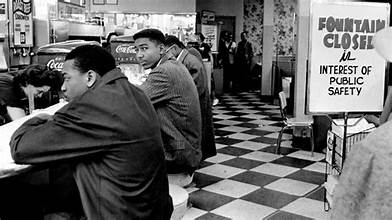By: Saundra Sorenson, Skanner
Artist Jeremy Okai Davis’s first visit to the city happened to align with the 2006 Oregon Biennial at the Portland Art Museum. Impressed by the show, Davis made it a personal goal to see his work exhibited in the venue.
In September, Davis will indeed see three of his large pieces on display as part of the groundbreaking Black Artists of Oregon show, which will run through March of next year.
“This exhibit, I think, is a great example of putting a spotlight on a history that didn’t get the
attention that it deserved, or people that didn’t get the attention that they deserved when they
were producing the work,” Davis told The Skanner.
Davis will be one of 67 featured Black artists. The oldest, painter, cartographer and lithographer Grafton Tyler Brown, was born in 1841. The youngest, painter Sadé DuBoise, was born more than 150 years later.
“For me, it’s really community and ancestral work. Who were these artists? What did they care
about? What did they have to endure? To live as artists in this region, and to be able to
understand their work and what it meant for their lives, what their work says about their lives,
their thoughts – it’s really, for me, just an aspect of honoring and caring for and with Black
people.”
Surfacing History
Like Davis and so many other artists, Abioto’s story began outside of Oregon. She moved from Memphis to Portland 13 years ago with her mother, a writer and activist, and her four sisters, who are each artists in their own right. A graduate of Spelman College in Atlanta, GaAbioto has advanced as an artist while delving deep into her adopted city’s uneasy reckoning with racial justice.
Last year, she launched a campaign to purchase and preserve a house in northeast Portland that was first the home of Beatrice Morrow Cannady, influential community organizer, civil rights activist and founding member of the Portland NAACP; the editor and owner of Portland’s first Black-owned newspaper, The Advocate; and the first Black woman to graduate from law school in the state of Oregon when she received her degree from Northwestern College of Law in 1922. Cannady’s legislative work ultimately led to the overturning of racist laws that disenfranchised African Americans in Oregon.
Although the effort to purchase Cannady’s home fell victim to Portland’s bruising real estate market, none of it was in vain: Abioto produced a body of research and writing further documenting Cannady’s life and work. And Abioto, who has seen her own work exhibited at the
Portland Art Museum, has made sure Cannady has a strong presence in the milestone exhibit. “She’s in this story, too,” Abioto said. “In 1932, she helped bring an exhibition of Black artists to the Portland Art Museum.”
Abioto wanted to tell a similar story, something she realized was missing in the city’s art narrative. In 2018, while sitting on an intergenerational civil rights activists panel hosted by Oregon Black Pioneers, she realized she was the only artist represented.
“There wasn’t someone older to talk to how things were in the nineties or the eighties or the 60s,” she said. “I realized I did not know that history.”
A couple months later, she applied for and received an Emerging Journalists Community Stories Fellowship through Oregon Humanities. It allowed her to do the kind of tenacious deep-dive necessary to compile a more complete history of Black artists in the state. “It’s a fellowship where you have a mentor to guide you in some journalism process, so I focused my research on that history and presence of Black artists,” she said. “I started doing oral history interviews, (exploring) archives and collections here in the region but also elsewhere. I was
hearing different names I didn’t know – I would just follow up and do the research. I published an essay that came out of Oregon Humanities in April 2019.
“I just kept going because it was compelling and felt important.” She also “went all out,” frequenting eBay and other resale websites to purchase works by elder
Black artists and those who had passed.
With another fellowship, this time from the Independent Publishing Resource Center, Abioto began sharing salient pieces of information with Grace Kook-Anderson, the Arlene and Harold Schnitzer Curator of Northwest Art at the Portland Art Museum. Kook-Anderson subsequently asked Abioto to curate this exhibit.
Together, they have secured a number of grants totalling around $500,000.
“It’s apparently the first show to be fully funded a year in advance,” Abioto said. “For me it’s just about investment in Black artists.”
Hidden Histories
The inaugural purchase in Abioto’s personal collection of Black artists was a piece by Ray Eaglin, a college football player who was also an artist, writer, painter and poet who became known, Abioto said, as the “underground general” of the local Black Panther party. When he graduated from the University of Oregon in 1969, contemporaneous newspaper coverage noted
he stepped up to the mic to speak about human rights, civil rights and ending the Vietnam War.
A man both of and ahead of his time, Eaglin’s portraits lean modernist, impressively bold and experimental. Abioto acquired one of Eaglin’s paintings online for $77. In a subsequent interview with his daughter, Abioto learned Eaglin had likely produced about a thousand pieces during his lifetime — work that in the seventies could be found displayed around Portland, sold to
support the Urban League and Eritrean Community Center.
“The presence of Black artists has not been valued here,” Abioto said.
“Rather, Black people have always valued it. But in the wider culture of institutions – our work has not been well represented or taken care of. For me that was a spark. This was there, this is just one piece.”
She added, “There are so many other pieces out there that need care and they need to be seen, or they want to be seen.”
‘An Act Of Faith’
Davis has a similar philosophy in his work.
“My subjects come to me based off a curiosity,” he said. “In my research, if I’m building a body of work and I come across a name or somebody from history that’s less familiar to me that feels like they shouldn’t have been less familiar to me – based off what they’ve done in their life – and if it sounds like a person that seems like they should’ve been way more influential on Black
culture and Black history, I’ll gravitate towards those. Because of my lack of knowledge, I always feel like there’s probably other people like me that haven’t encountered these people.”
Davis creates portraits with a “pointillistic and pixelation” technique, often using old photos as a point of reference.
“My subjects are based off of me trying to kind of do an ‘each one teach one’ thing, where I’m learning, myself, about these people, but at the same time, when I exhibit the paintings, the viewers of the paintings are going to get that same curiosity I have if I’m placing the right amount of respect on the image.”
Featured artist Adriene Cruz will contribute a colorful, tactile offering to the exhibit. Working largely in textiles, Cruz has been a part of the Portland art community for 40 years and has had her work shown at the Smithsonian.
Although she began her time in art school studying stone and wood sculpture, she found she was much more attracted to working with softer media.
Abioto requested some of Cruz’s early work from the eighties, when she focused on crochet. She supplied some of those pieces, and will display more recent work.
“I wanted to share my tribute to my mom,” Cruz said. “I started it two weeks after she left – she died Nov. 12, 2022. I knew I was blue and I wanted to do a blue piece, and I’ve pretty much been working on that off and on all year. It’s all about her.”
It is a fitting inclusion, since Cruz’s early pivot in medium was heavily inspired by her mother’s own joy at creating tactile pieces.
“I see it as feeding your spirit,” Cruz said of the artistic process. “Does it make you happy? Does your heart sing? Do I feel that connection of spirit guiding me? I might have an idea, but I really do not know what any piece is going to look like, once it’s developed. It’s an act of faith, really.”
For more information about the Black Artists of Oregon exhibit, visit
portlandartmuseum.org/exhibitions/black-artists-of-oregon.











